Abstract
Six pigeons were trained to respond on two keys, each of which provided reinforcers on an arithmetic variable-interval schedule. These concurrent schedules ran nonindependently with a 2-s changeover delay. Six sets of conditions were conducted. Within each set of conditions the ratio of reinforcers available on the two alternatives was varied, but the arranged overall reinforcer rate remained constant. Each set of conditions used a different overall reinforcer rate, ranging from 0.22 reinforcers per minute to 10 reinforcers per minute. The generalized matching law fit the data from each set of conditions, but sensitivity to reinforcer frequency (a) decreased as the overall reinforcer rate decreased for both time allocation and response allocation based analyses of the data. Overall response rates did not vary with changes in relative reinforcer rate, but decreased with decreases in overall reinforcer rate. Changeover rates varied as a function of both relative and overall reinforcer rates. However, as explanations based on changeover rate seem unable to deal with the changes in generalized matching sensitivity, discrimination accounts of choice may offer a more promising interpretation.
Keywords: concurrent schedule, generalized matching law, sensitivity, reinforcer rate, response rate, changeover rate, key peck, pigeon
Full text
PDF

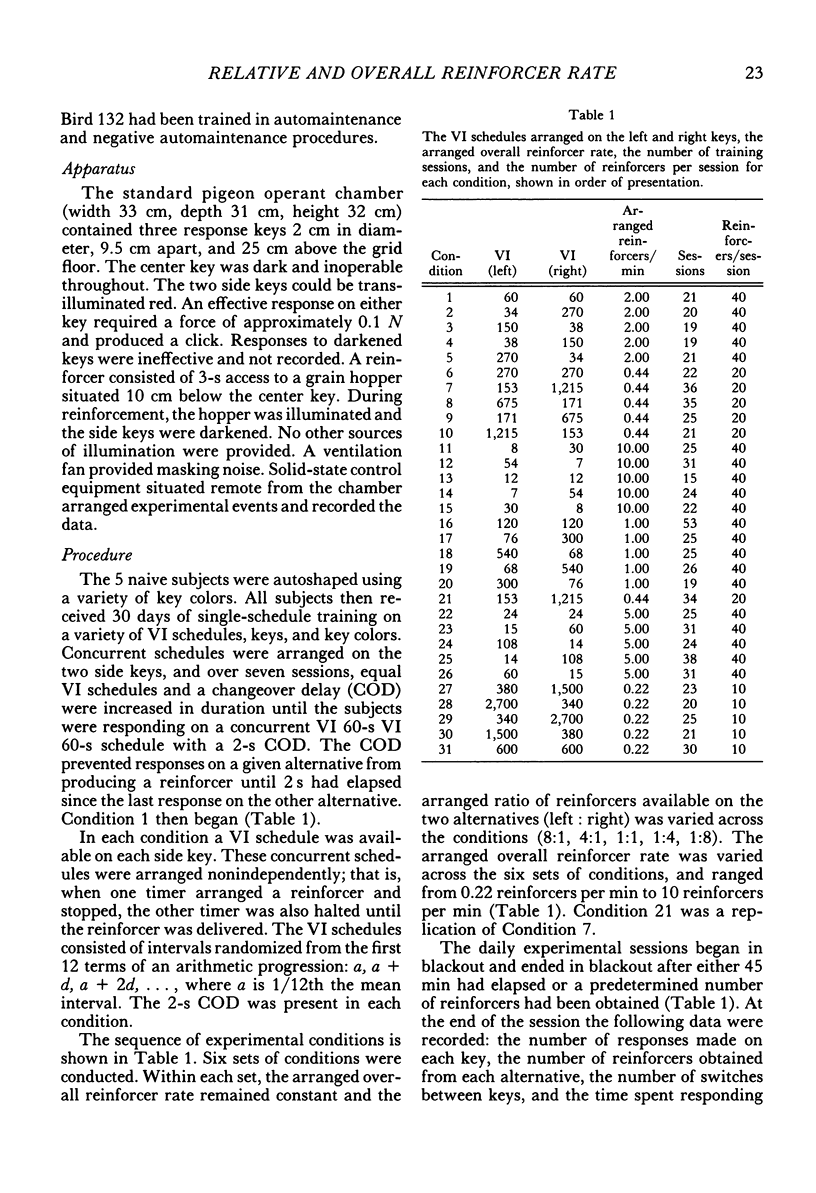
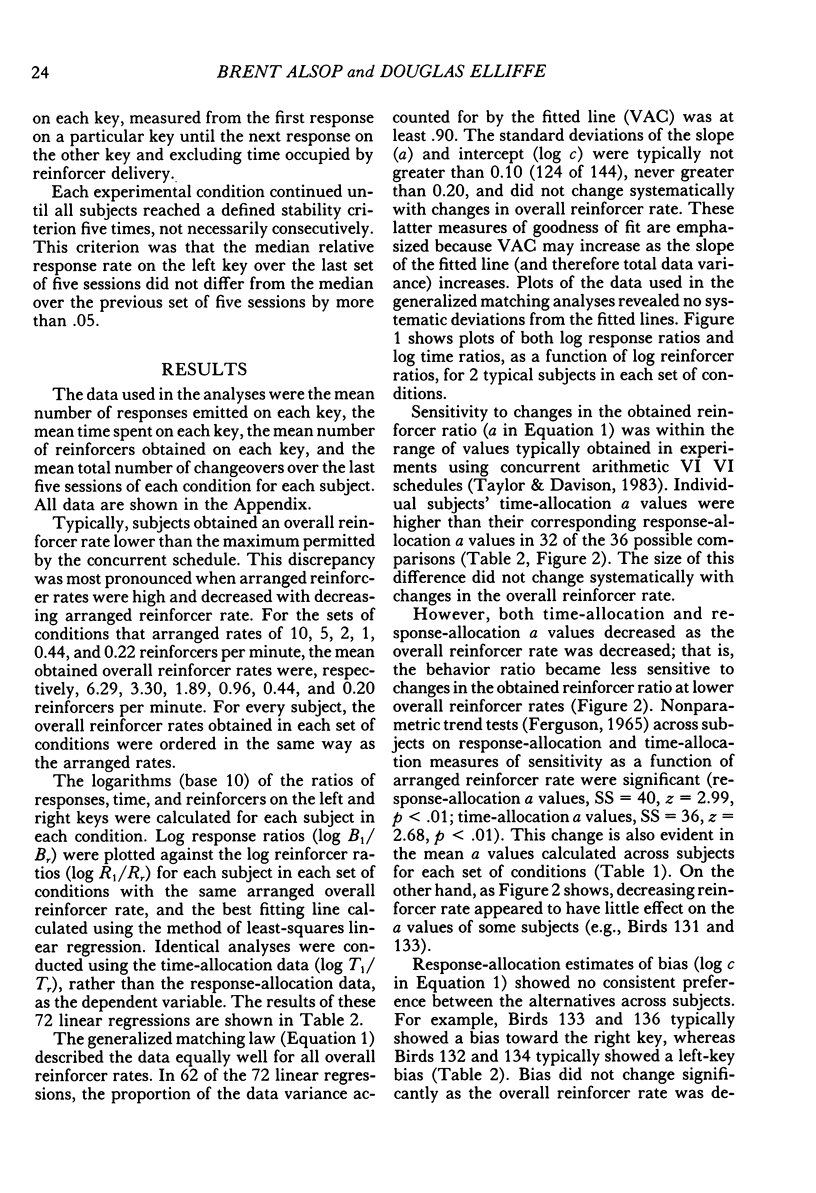
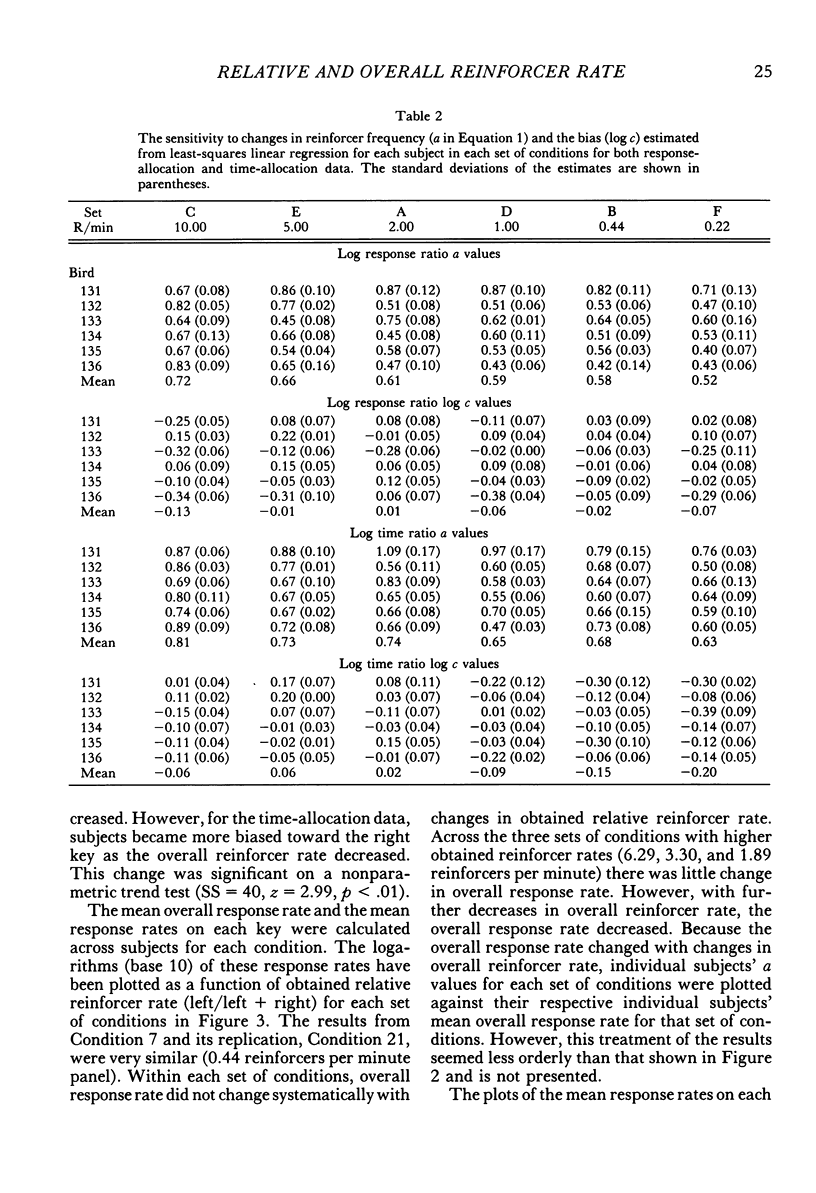
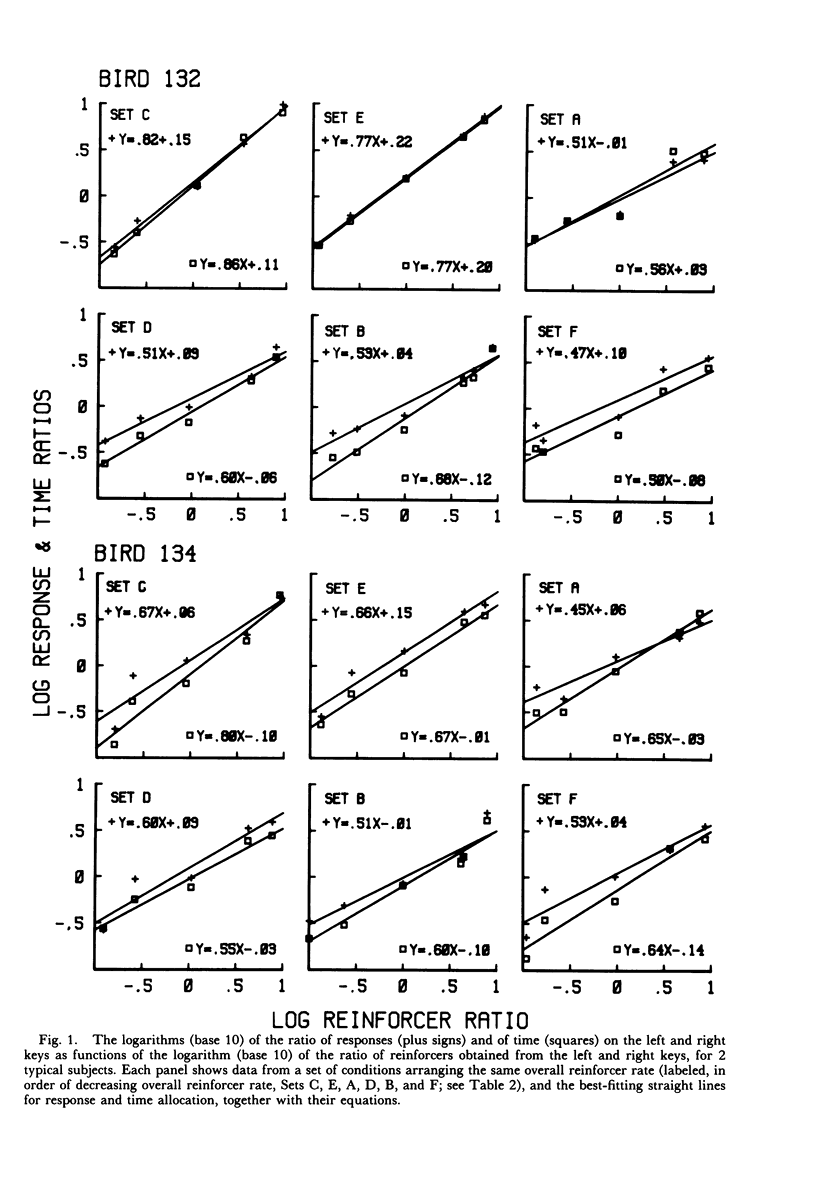
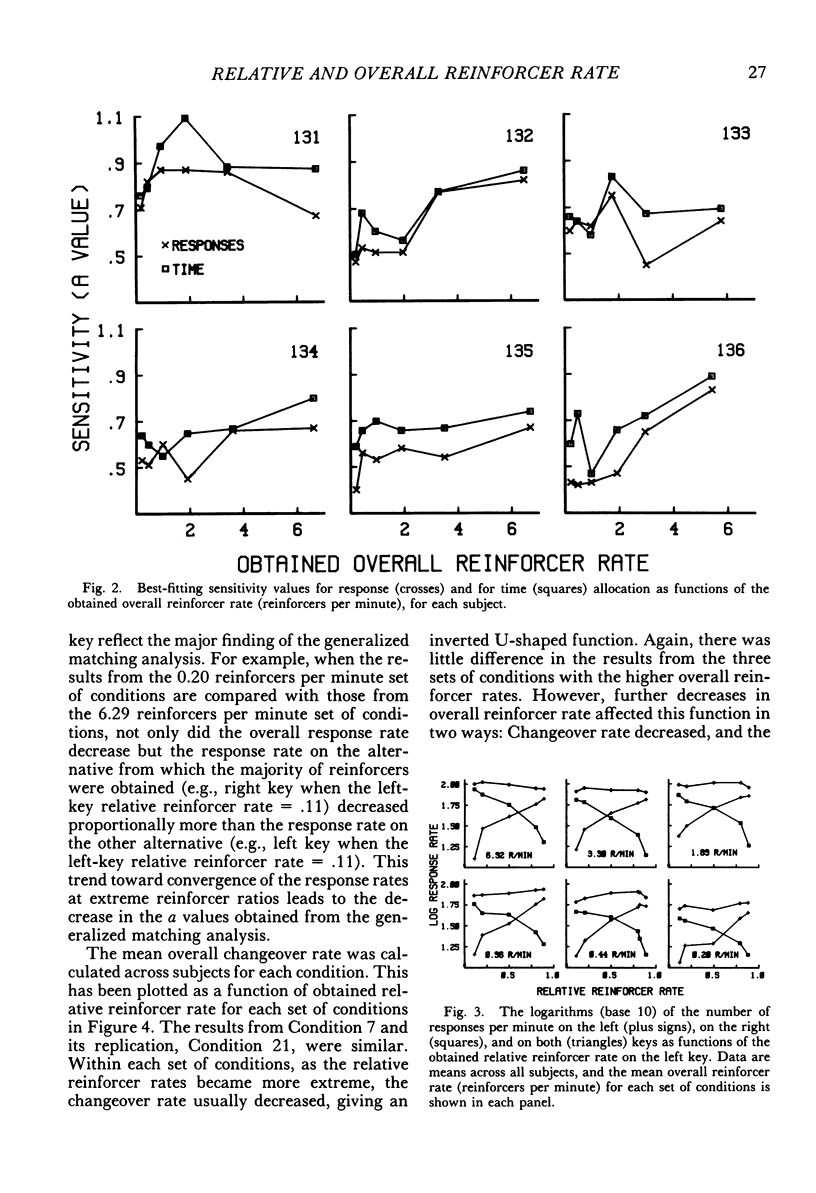
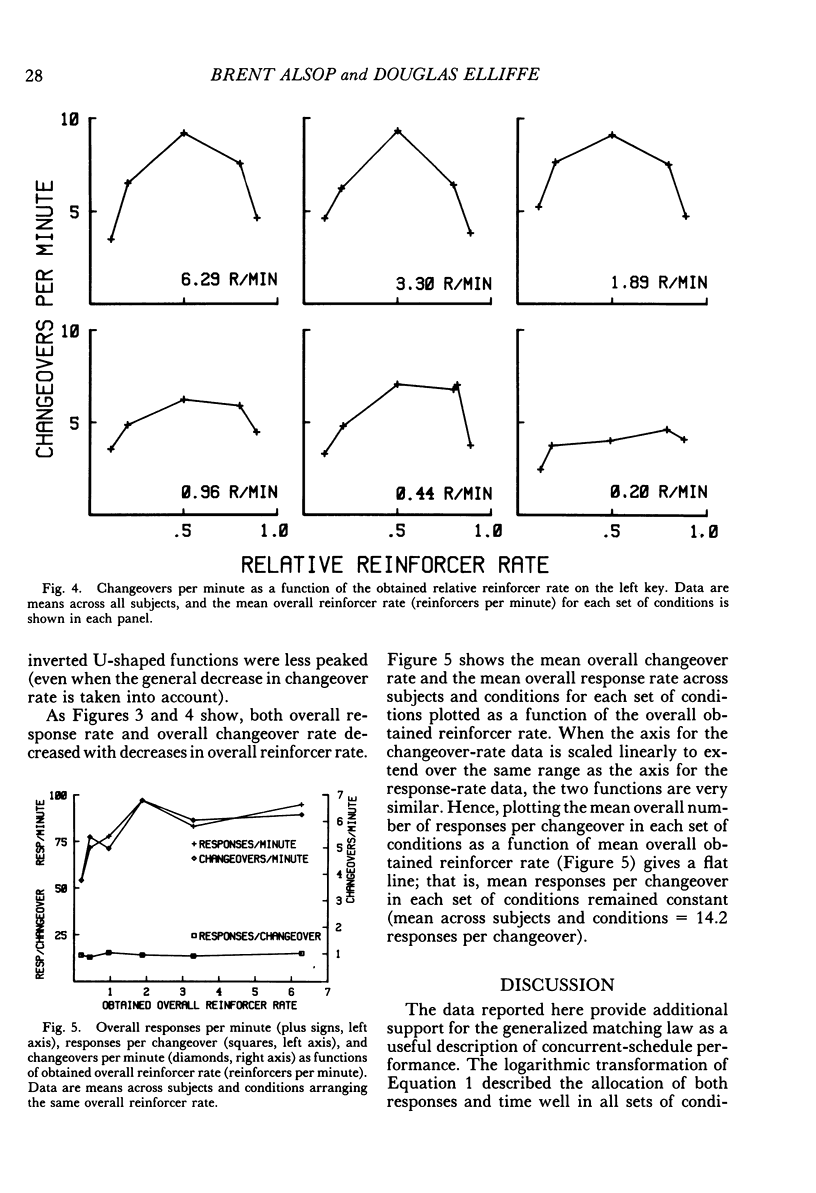

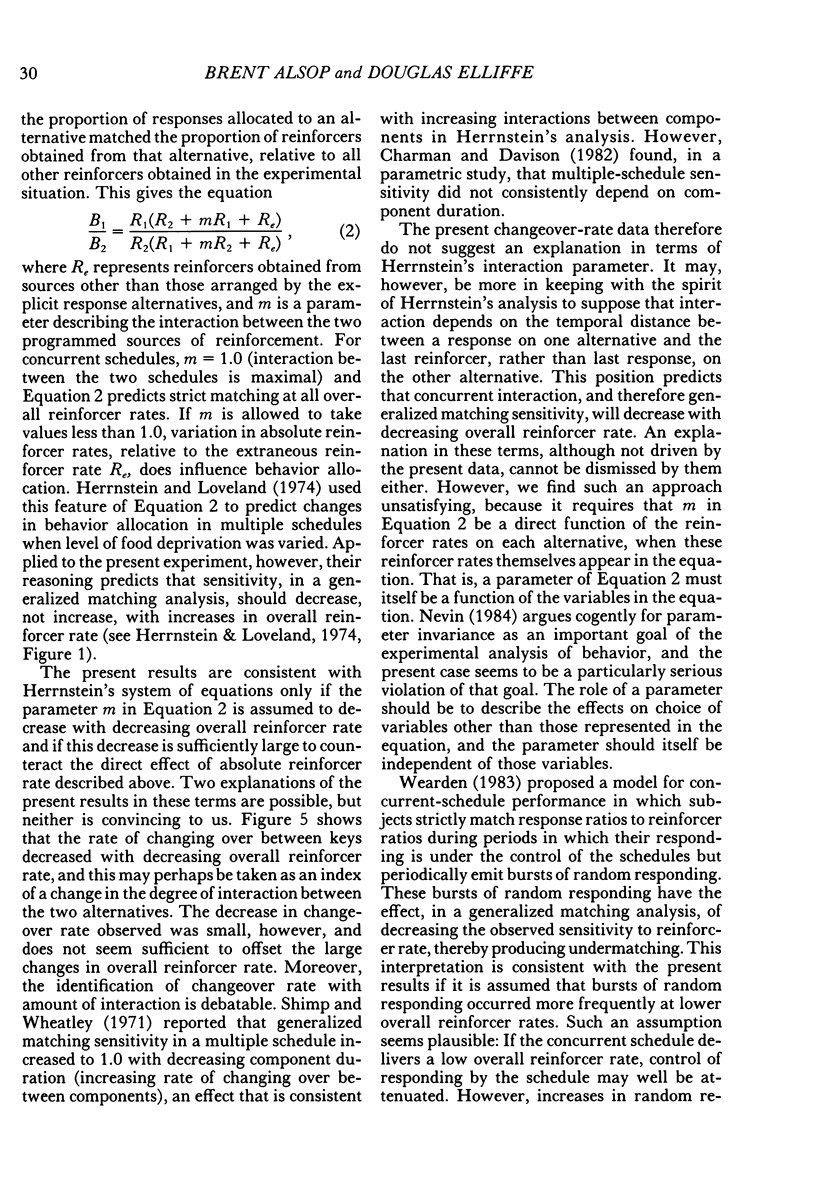
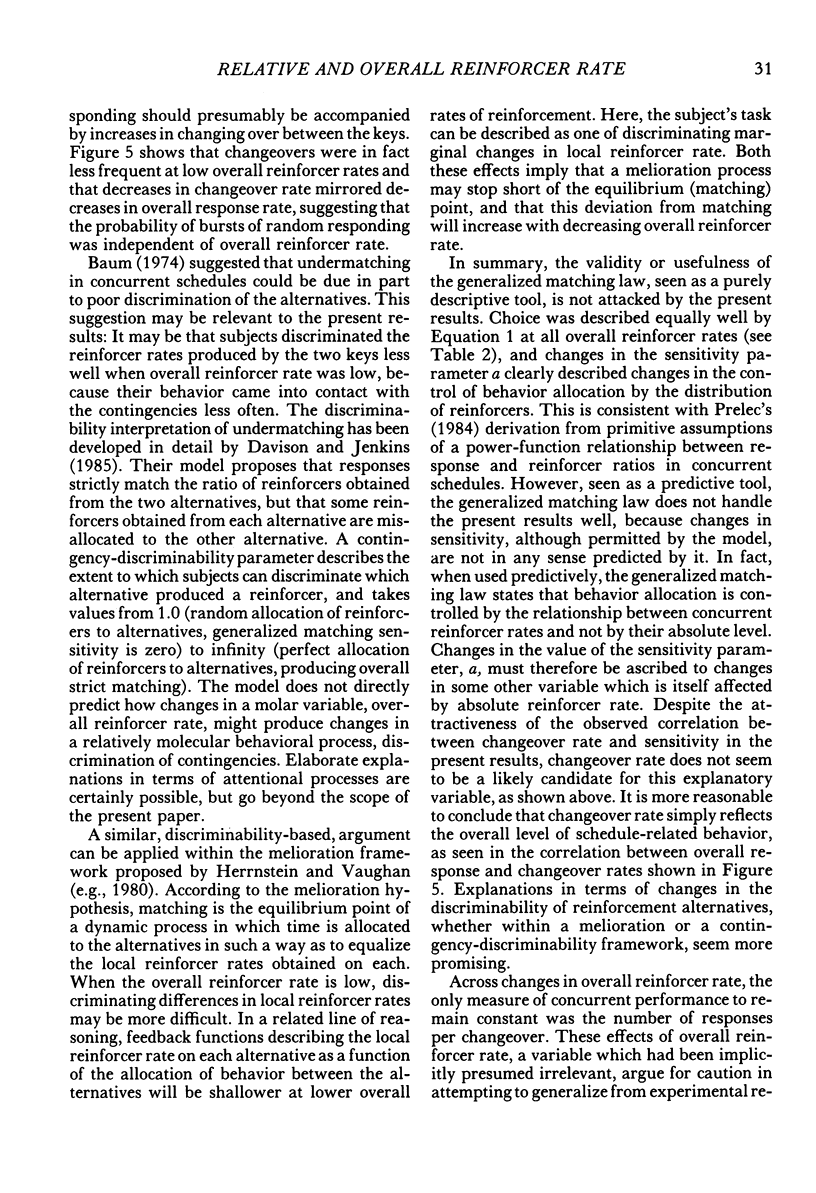
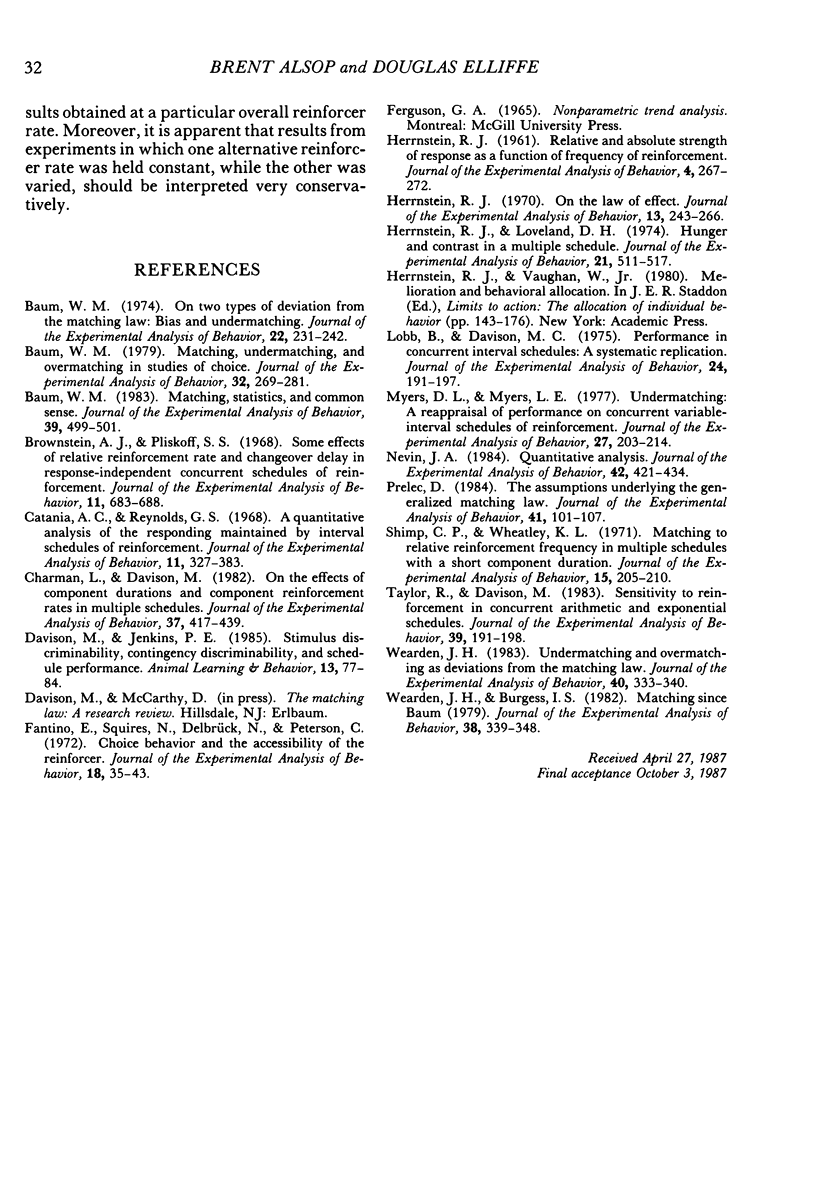
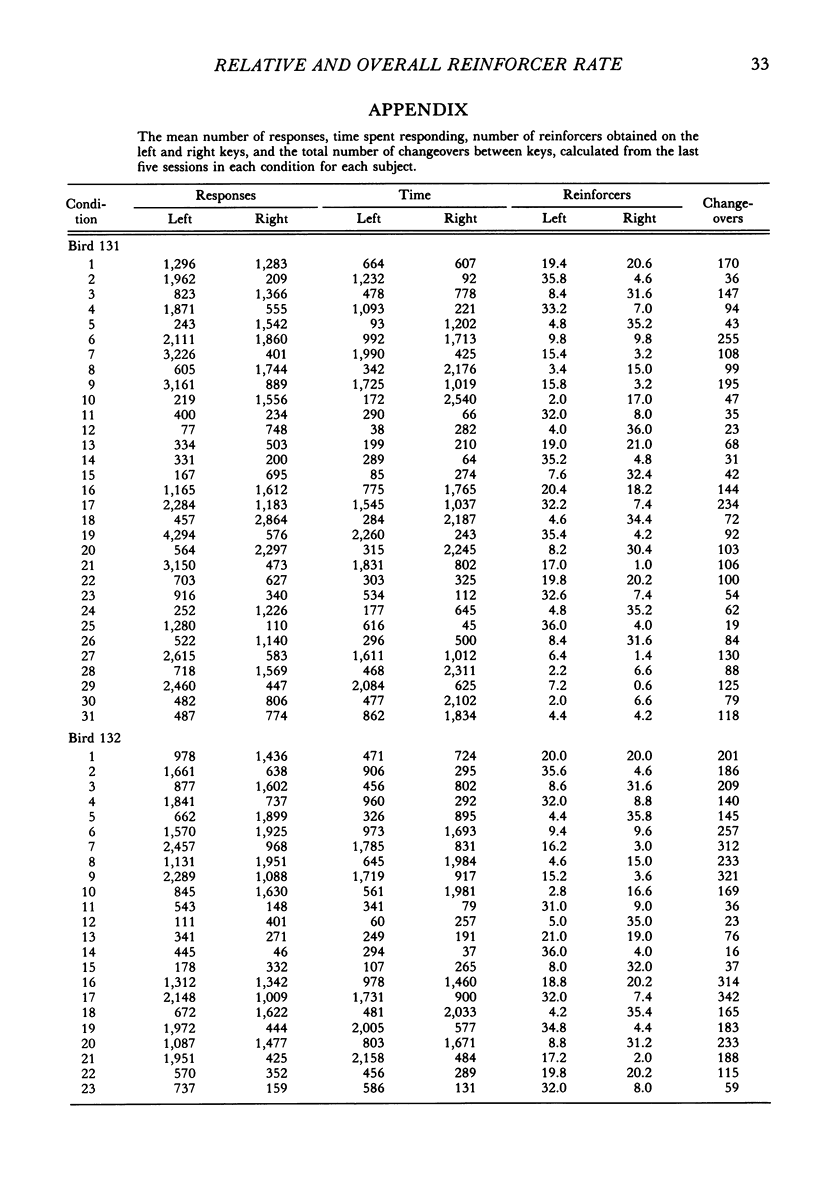


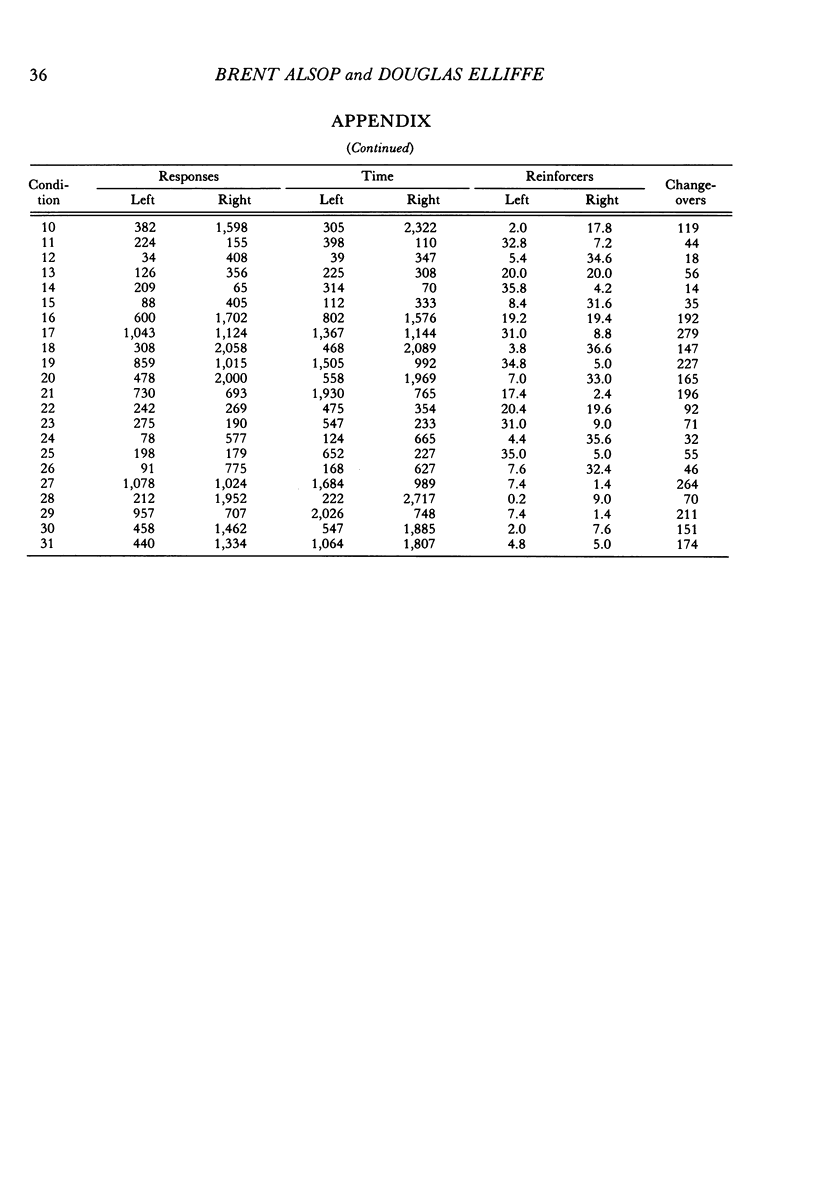
Selected References
These references are in PubMed. This may not be the complete list of references from this article.
- Baum W. M. Matching, statistics, and common sense. J Exp Anal Behav. 1983 May;39(3):499–501. doi: 10.1901/jeab.1983.39-499. [DOI] [PMC free article] [PubMed] [Google Scholar]
- Baum W. M. Matching, undermatching, and overmatching in studies of choice. J Exp Anal Behav. 1979 Sep;32(2):269–281. doi: 10.1901/jeab.1979.32-269. [DOI] [PMC free article] [PubMed] [Google Scholar]
- Baum W. M. On two types of deviation from the matching law: bias and undermatching. J Exp Anal Behav. 1974 Jul;22(1):231–242. doi: 10.1901/jeab.1974.22-231. [DOI] [PMC free article] [PubMed] [Google Scholar]
- Brownstein A. J., Pliskoff S. S. Some effects of relative reinforcement rate and changeover delay in response-independent concurrent schedules of reinforcement. J Exp Anal Behav. 1968 Nov;11(6):683–688. doi: 10.1901/jeab.1968.11-683. [DOI] [PMC free article] [PubMed] [Google Scholar]
- Catania A. C., Reynolds G. S. A quantitative analysis of the responding maintained by interval schedules of reinforcement. J Exp Anal Behav. 1968 May;11(3 Suppl):327–383. doi: 10.1901/jeab.1968.11-s327. [DOI] [PMC free article] [PubMed] [Google Scholar]
- Charman L., Davison M. On the effects of component durations and component reinforcement rates in multiple schedules. J Exp Anal Behav. 1982 May;37(3):417–439. doi: 10.1901/jeab.1982.37-417. [DOI] [PMC free article] [PubMed] [Google Scholar]
- Fantino E., Squires N., Delbrück N., Peterson C. Choice behavior and the accessibility of the reinforcer. J Exp Anal Behav. 1972 Jul;18(1):35–43. doi: 10.1901/jeab.1972.18-35. [DOI] [PMC free article] [PubMed] [Google Scholar]
- HERRNSTEIN R. J. Relative and absolute strength of response as a function of frequency of reinforcement. J Exp Anal Behav. 1961 Jul;4:267–272. doi: 10.1901/jeab.1961.4-267. [DOI] [PMC free article] [PubMed] [Google Scholar]
- Herrnstein R. J., Loveland D. H. Hunger and contrast in a multiple schedule. J Exp Anal Behav. 1974 May;21(3):511–517. doi: 10.1901/jeab.1974.21-511. [DOI] [PMC free article] [PubMed] [Google Scholar]
- Herrnstein R. J. On the law of effect. J Exp Anal Behav. 1970 Mar;13(2):243–266. doi: 10.1901/jeab.1970.13-243. [DOI] [PMC free article] [PubMed] [Google Scholar]
- Lobb B., Davison M. C. Performance in concurrent interval schedules: a systematic replication. J Exp Anal Behav. 1975 Sep;24(2):191–197. doi: 10.1901/jeab.1975.24-191. [DOI] [PMC free article] [PubMed] [Google Scholar]
- Myers D. L., Myers L. E. Undermatching: a reappraisal of performance on concurrent variable-interval schedules of reinforcement. J Exp Anal Behav. 1977 Jan;27(1):203–214. doi: 10.1901/jeab.1977.27-203. [DOI] [PMC free article] [PubMed] [Google Scholar]
- Nevin J. A. Quantitative analysis. J Exp Anal Behav. 1984 Nov;42(3):421–434. doi: 10.1901/jeab.1984.42-421. [DOI] [PMC free article] [PubMed] [Google Scholar]
- Prelec D. The assumptions underlying the generalized matching law. J Exp Anal Behav. 1984 Jan;41(1):101–107. doi: 10.1901/jeab.1984.41-101. [DOI] [PMC free article] [PubMed] [Google Scholar]
- Shimp C. P., Wheatley K. L. Matching to relative reinforcement frequency in multiple schedules with a short component duration. J Exp Anal Behav. 1971 Mar;15(2):205–210. doi: 10.1901/jeab.1971.15-205. [DOI] [PMC free article] [PubMed] [Google Scholar]
- Taylor R., Davison M. Sensitivity to reinforcement in concurrent arithmetic and exponential schedules. J Exp Anal Behav. 1983 Jan;39(1):191–198. doi: 10.1901/jeab.1983.39-191. [DOI] [PMC free article] [PubMed] [Google Scholar]
- Wearden J. H., Burgess I. S. Matching since Baum (1979). J Exp Anal Behav. 1982 Nov;38(3):339–348. doi: 10.1901/jeab.1982.38-339. [DOI] [PMC free article] [PubMed] [Google Scholar]
- Wearden J. H. Undermatching and overmatching as deviations from the matching law. J Exp Anal Behav. 1983 Nov;40(3):333–340. doi: 10.1901/jeab.1983.40-333. [DOI] [PMC free article] [PubMed] [Google Scholar]


